Sensor Sweep: Edgar Rice Burroughs, D&D Slave Lord Module, Michael Moorcock
Monday , 8, July 2024 Sensor Sweep Leave a commentFantasy (Rageaholic): The Witcher vs. Elric: Popular Plagiarism
Games (Bounding Into Comics): To the surprise of no one without a grain of sense, Japanese players are not happy with Ubisoft’s decision to use Assassin’s Creed‘s first official foray into the island nation as a platform for more ‘diversity activism’.
Comic Books (Paperback Warrior): Gold Key marched out their sword-and-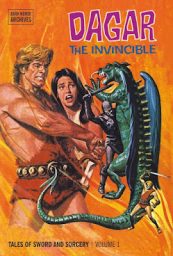 sorcery comic, Dagar the Invincible in October 1972 with the blurb “Tales of Sword and Sorcery”. The entire series was visually created by artist Jesse Santos and written by Donald F. Glut. It ran a total of 19 issues with two issues reprinting the debut (#19 published under the Whitman brand).
sorcery comic, Dagar the Invincible in October 1972 with the blurb “Tales of Sword and Sorcery”. The entire series was visually created by artist Jesse Santos and written by Donald F. Glut. It ran a total of 19 issues with two issues reprinting the debut (#19 published under the Whitman brand).
Streaming (Nerdrotic): “ARE THEY TROLLING?!” ‘Rings of Power’ Season 2 Inspired by *sigh* BREAKING BAD…
 Cinema (Frontier Partisans): There are three storylines that look to converge on a nascent townsite in the San Pedro Valley of Arizona — the titular “Horizon.” I say “look to converge” because after three hours, they still haven’t yet. That’s left to the next chapters in this purportedly four-part cinematic epic. So, what we have in this first installment is a whole lot of foundation with no resolution. None at all.
Cinema (Frontier Partisans): There are three storylines that look to converge on a nascent townsite in the San Pedro Valley of Arizona — the titular “Horizon.” I say “look to converge” because after three hours, they still haven’t yet. That’s left to the next chapters in this purportedly four-part cinematic epic. So, what we have in this first installment is a whole lot of foundation with no resolution. None at all.
Edgar Rice Burroughs (Tentaclii): New on Archive.org, a good scan of the 1965 hardback of Edgar Rice Burroughs: Master Of Adventure, and with a downloadable PDF.
Writers (Jon del Arroz): The Neil Gaiman allegations are wild, but we’re seeing no mention of it at all within the comic industry media. Bleeding Cool, Comicsbeat, CBR, all silent. John Scalzi made a cope post but that’s it. Why is that?
Fantasy (DVS Press): “Fantasy” means simply imagination, as the word is used in music composition. So the simple and robust definition of fantasy is an imaginative work of fiction, but that by itself is somewhat wanting since all fiction involves imagination on some level. Fantasy fiction, therefore needs a tighter definition: fiction that involves the imaginative as opposed to the real.
Comic Books (Dark Worlds Quarterly): The first is from the people who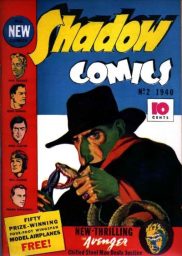 published The Avenger Pulps, Street & Smith. Shadow Comics was their most popular and longest running comic book. Doc Savage started off with his own comic but after twenty issues he became one of the strips in Shadow Comics. The Avenger never had his own book but went straight to Shadows Comics. His run there was not long, only five issues. I suspect he was phased out because the comic looked too similar to Doc Savage. It’s really hard to make that clay-face gimmick work.
published The Avenger Pulps, Street & Smith. Shadow Comics was their most popular and longest running comic book. Doc Savage started off with his own comic but after twenty issues he became one of the strips in Shadow Comics. The Avenger never had his own book but went straight to Shadows Comics. His run there was not long, only five issues. I suspect he was phased out because the comic looked too similar to Doc Savage. It’s really hard to make that clay-face gimmick work.
Robert E.Howard (Michael K. Vaughan): The Robert E. Howard Foundation Press Sent Me Some Books.
Edgar Rice Burroughs (Black Gate): I’ve had a lifelong fascination with “hollow earth” stories, a style of fantasy fiction that presents ancient, lost societies of people (and/or humanoids) living deep under the earth, where Jurassic and Pleistocene behemoths — as well as uncategorized horrors — struggle to survive in the subterranean jungles of a sunless world. My favorite of this genre is the Pellucidar series, by Edgar Rice Burroughs, which began in 1914 when At the Earth’s Core was serialized in All-Story Weekly, before the novel was published in book format.
“hollow earth” stories, a style of fantasy fiction that presents ancient, lost societies of people (and/or humanoids) living deep under the earth, where Jurassic and Pleistocene behemoths — as well as uncategorized horrors — struggle to survive in the subterranean jungles of a sunless world. My favorite of this genre is the Pellucidar series, by Edgar Rice Burroughs, which began in 1914 when At the Earth’s Core was serialized in All-Story Weekly, before the novel was published in book format.
Science Fantasy (Ken Lizzi): So, what is The Metal Monster? Imagine a concoction of one part She, one part The Moon Pool (natch), one part Lovecraft’s cosmic horror, one part D&D Modrons, and one part Big Hero Six. Blend and strain through A. Merritt’s glorious, vividly colorful, and painstakingly descriptive prose. It ought to make for a masterpiece. iptions are exacting, yet are written in such dense detail that it is easy to get lost.
D&D (Grognardia): The “Slave Lords” series of AD&D modules consists of four modules, beginning with Slave Lords of the Undercity, about which I have fond, if complicated, feelings. Truth be told, that’s true of all the modules in the A-series, They’re a mix of compelling ideas, some memorable encounters, and contrived situations in order to serve their purpose as tournament scenarios.
four modules, beginning with Slave Lords of the Undercity, about which I have fond, if complicated, feelings. Truth be told, that’s true of all the modules in the A-series, They’re a mix of compelling ideas, some memorable encounters, and contrived situations in order to serve their purpose as tournament scenarios.
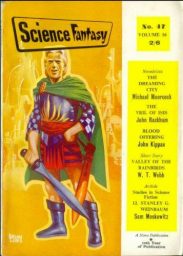 Fantasy (SFF Remembrance): Truth be told I feel almost the same way introducing Michael Moorcock as I did when I introduced H. P. Lovecraft, in that while my feelings on these men as writers is mixed, I have to admit their importance to genre writing (each in his own way) is immense. I get the irony is that Moorcock really dislikes Lovecraft (as both a writer and person) to the point of basically denying his influence on other writers
Fantasy (SFF Remembrance): Truth be told I feel almost the same way introducing Michael Moorcock as I did when I introduced H. P. Lovecraft, in that while my feelings on these men as writers is mixed, I have to admit their importance to genre writing (each in his own way) is immense. I get the irony is that Moorcock really dislikes Lovecraft (as both a writer and person) to the point of basically denying his influence on other writers
Pulp (Rough Edges): This is a bit of a somber cover by Robert Fuqua, but modern life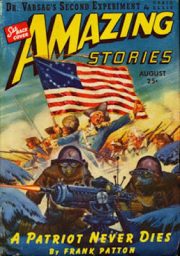 has gotten a bit somber, hasn’t it? On the other hand, I’m a firm believer in carrying on, since we can’t really do anything else. I do hope it’s an enjoyable day for those of you celebrating in the United States.
has gotten a bit somber, hasn’t it? On the other hand, I’m a firm believer in carrying on, since we can’t really do anything else. I do hope it’s an enjoyable day for those of you celebrating in the United States.
History (Metatron): Ever thought killing the horse of an enemy knight in battle would be the easiest way to get rid of an armoured knight? After watching this video will you still think that way?
Pulp (Don Herron): Check out that great Chinatown alley. Can’t you just see Lon Chaney as a vicious legless Lord of the Underworld creeping over the stone bricks, enrapt in savage dreams of subjugating the city? But Chaney kept his lair in San Francisco’s Chinatown, circa 1920, and the picture above is Charles Lane, 1938, in New York City’s Chinatown.
Writing (Steven Pressfield): The process of finding our own voice is not one of learning, but of unlearning. Not of acquiring baggage but of jettisoning it. To find our true voice, we de-program ourselves of every convention, identity and belief that has been hammered into our skulls by well-meaning parents, teachers, coaches and counselors; by our families, our religions, our ethnic and regional origins. We hollow ourselves out and refill from scratch.
 Edgar Rice Burroughs (ERB Zine): Edgar Rice Burroughs has often been accused of reusing plot elements in his stories, and to some extent he did. I will here look at how Burroughs’ stories often centre around the conflict between Princess and Hero, and the resolution to that conflict. Whenever Burroughs tosses a Princess into the Hero’s way, he builds a plot around those two characters, a plot which is almost always based on the same template. There are variations, but only very rarely does he move away completely from the standard setup.
Edgar Rice Burroughs (ERB Zine): Edgar Rice Burroughs has often been accused of reusing plot elements in his stories, and to some extent he did. I will here look at how Burroughs’ stories often centre around the conflict between Princess and Hero, and the resolution to that conflict. Whenever Burroughs tosses a Princess into the Hero’s way, he builds a plot around those two characters, a plot which is almost always based on the same template. There are variations, but only very rarely does he move away completely from the standard setup.
Art (Geeky Nerf Herder): Showcasing art from some of my favourite artists,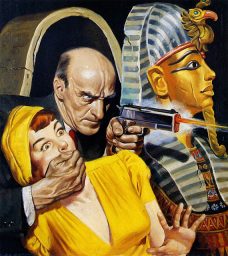 and those that have attracted my attention, in the field of visual arts, including vintage; pulp; pop culture; books and comics; concert posters; fantastical and imaginative realism; classical; contemporary; new contemporary; pop surrealism; conceptual and illustration. The art of Rafael DeSoto.
and those that have attracted my attention, in the field of visual arts, including vintage; pulp; pop culture; books and comics; concert posters; fantastical and imaginative realism; classical; contemporary; new contemporary; pop surrealism; conceptual and illustration. The art of Rafael DeSoto.
Cinema (John Coult Art): This is a big post about a big subject: the film noir of the 1940s and 1950s, also the “neo-noir” revival of the following decades. The project in question was my attempt to watch all the films listed in a comprehensive study of the form, Film Noir: An Encyclopedic Reference to the American Style, which was published in 1979.
Cinema (Art of the Movies): Francis Ford Coppola’s The Godfather is a rare thing: An artfully made crowd-pleaser that smashed it at the box office and delighted both critics and a mainstream audience.
Cinema (Collection Reviewed): Carpenter’s second movie is a trashy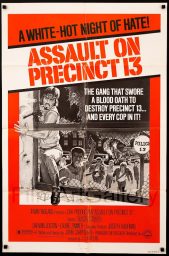 homage to one of the greatest Westerns, Rio Bravo (1959, dir Howard Hawks). A curiously multi-ethnic gang in LA is put out when some of the members are gunned down by the police. Retaliating, they go on a murder spree that culminates in the siege and titular assault on an isolated police station that’s closing down and is only protected by a skeleton crew.
homage to one of the greatest Westerns, Rio Bravo (1959, dir Howard Hawks). A curiously multi-ethnic gang in LA is put out when some of the members are gunned down by the police. Retaliating, they go on a murder spree that culminates in the siege and titular assault on an isolated police station that’s closing down and is only protected by a skeleton crew.
D&D (Grumpy Wizard): There is a school of thought that “vanilla” old school monsters, villains, pseudo-European medieval settings, are not interesting and should be set aside for something more creative. What is meant by “creative” is often an aesthetic that is absurd, unusual, and experimental.
Fiction (Nocturnal Revelries): Jaws was a bestseller when it came out, but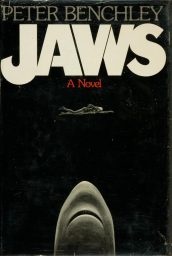 its fame is largely due to the movie version that came out a year after its release. Spielberg’s classic is significantly different to the novel. The basic plot (giant shark attacks small town) is the same, but the focus of the book is more on the characters than the killer fish.
its fame is largely due to the movie version that came out a year after its release. Spielberg’s classic is significantly different to the novel. The basic plot (giant shark attacks small town) is the same, but the focus of the book is more on the characters than the killer fish.
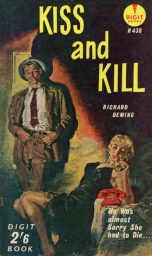 Crime Fiction (Pulp International): Charles Binger, whose work we don’t see often enough, created this great cover for Richard Deming’s 1960 novel Kiss and Kill. The book is about a couple of grifters who graduate from bunco scams to serial murders, first luring lonely women into marriage before offing them for their money. The two then skedaddle to other parts, rinse, and repeat. They never get too greedy in choosing their victims, as that would draw attention.
Crime Fiction (Pulp International): Charles Binger, whose work we don’t see often enough, created this great cover for Richard Deming’s 1960 novel Kiss and Kill. The book is about a couple of grifters who graduate from bunco scams to serial murders, first luring lonely women into marriage before offing them for their money. The two then skedaddle to other parts, rinse, and repeat. They never get too greedy in choosing their victims, as that would draw attention.
Fiction (Wyrd Britain): The book opens oddly with an extract from the wonderful ‘Ringstones‘ by Sarban, the pen name of British diplomat John W. Wall, a story I thoroughly enjoyed when I read it in the Tartarus Press edition a few years back and it doesn’t deserve to be experienced in this diminished manner.
D&D (Grognardia): There’s no use in fighting it. You’ll be seeing more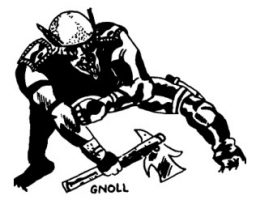 entries in what has inadvertently become a series for a few more weeks at least, perhaps longer. After last week’s post on bugbears, which are a uniquely D&D monstrous humanoid, I knew I’d have to turn to gnolls this week, as they, too, are unique to the game. Perhaps I should clarify that a little. There is no precedent, mythological or literary, for the spelling “gnoll.”
entries in what has inadvertently become a series for a few more weeks at least, perhaps longer. After last week’s post on bugbears, which are a uniquely D&D monstrous humanoid, I knew I’d have to turn to gnolls this week, as they, too, are unique to the game. Perhaps I should clarify that a little. There is no precedent, mythological or literary, for the spelling “gnoll.”
 Clark Ashton Smith (M Porcius): I am among those who like Smith, and I have devoted quite a volume of space on this blog to Smith stories, but there is still plenty of Smith material out there that I have yet to read. Case in point: While recently reading stories from the February 1939 issue of Weird Tales, I realized I had never read “The Tale of Satampra Zeiros,” a 1931 story by Clark Ashton Smith.
Clark Ashton Smith (M Porcius): I am among those who like Smith, and I have devoted quite a volume of space on this blog to Smith stories, but there is still plenty of Smith material out there that I have yet to read. Case in point: While recently reading stories from the February 1939 issue of Weird Tales, I realized I had never read “The Tale of Satampra Zeiros,” a 1931 story by Clark Ashton Smith.
Robert E. Howard (Paperback Warrior): I went back to the foggy moors and terrifying towns for another Solomon Kane story, “The Right Hand of Doom”. The story was never published in Howard’s lifetime having been rejected by Weird Tales. The first publication was in the book Red Shadows (Grant 1968).
Fiction (Horror Review): Gods of a Nameless Country, a collection of two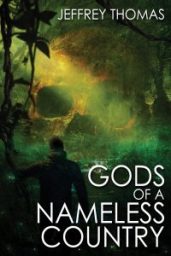 novelettes and a novella, is Thomas’ newest entry further exploring that setting and its rich past. Thomas’ other voyages to the Unnamed Country include another story collection entitled, simply, The Unnamed Country (Word Horde), the chapbook Scenes from a Village (Oddness), and the novella The Spirit of Place (Earthling Publications).
novelettes and a novella, is Thomas’ newest entry further exploring that setting and its rich past. Thomas’ other voyages to the Unnamed Country include another story collection entitled, simply, The Unnamed Country (Word Horde), the chapbook Scenes from a Village (Oddness), and the novella The Spirit of Place (Earthling Publications).
Please give us your valuable comment